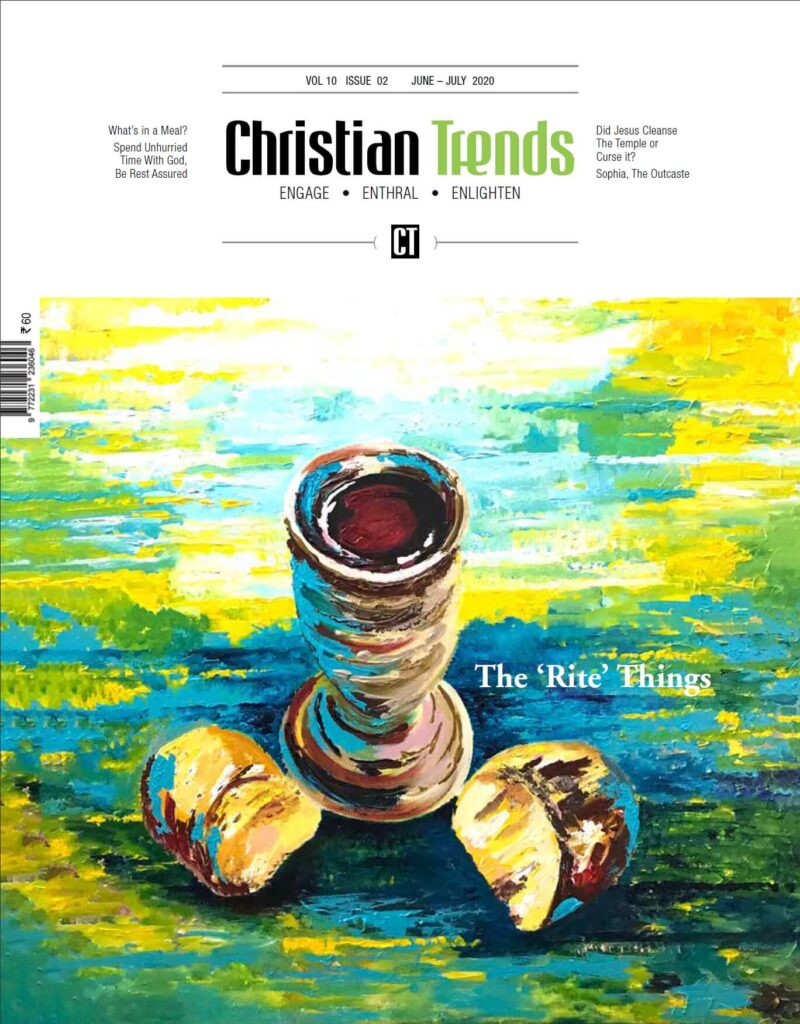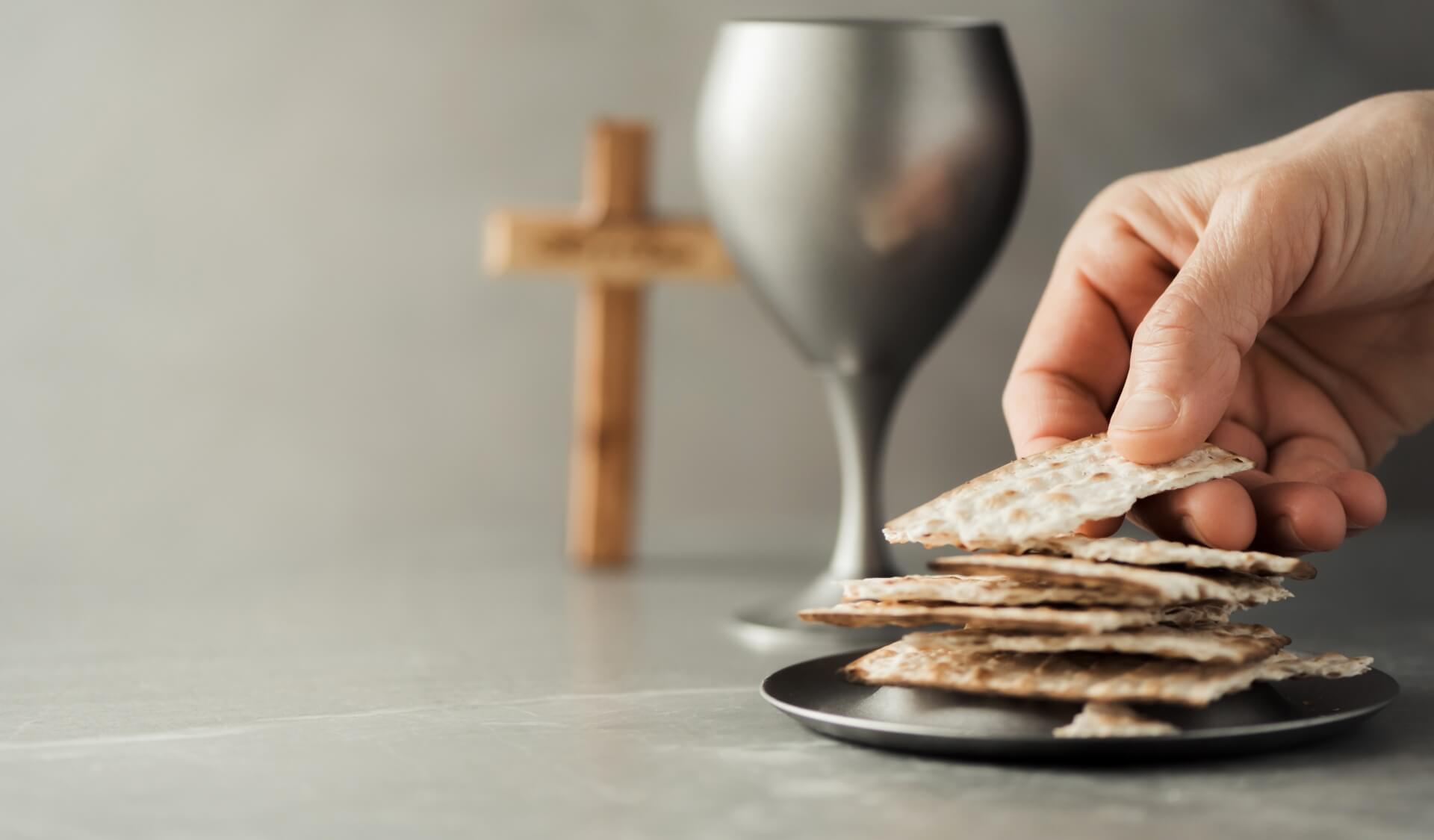Two years ago, on the 50th anniversary of the first moon landing, many Christians excitedly shared on social media that the first food that was eaten on the moon was communion bread and wine. It happened this way: Buzz Aldrin, who followed Neil Armstrong in getting down from the spacecraft to the moon, had asked his pastor if he could have consecrated bread and wine so that he could have communion on the moon. The pastor agreed. NASA gave him permission, but was told to do it without satellite communication to earth. That was because earlier when Apollo 8 entered the lunar orbit, the astronauts had read Genesis 1:1–10 over the radio. NASA was sued by Madelyn Murray O’Hair of American Atheists for violating the rule of separation of church and state, and NASA didn’t want that to happen again.
While it is commendable that Aldrin wanted to mark this historical occasion by affirming his faith, we need to ask, did Aldrin have Holy Communion then? The answer is “no”, because there is no such thing as one-person communion. The word “communion” has its roots in the old French word for “community” or in Latin means “fellowship, sharing, or mutual participation”. The KJV renders 1 Corinthians 10:16 thus: “The cup of blessing which we bless, is it not the communion of the blood of Christ? The bread which we break, is it not the communion of the body of Christ?” The word “communion” is the translation of the Greek word koinonia, which means “fellowship” or “sharing”.
The more serious error in how people think about communion is the belief that the bread mysteriously becomes the body of Christ and the wine becomes the blood of Christ. Many, not just Roman Catholics, believe that in Holy Communion somehow, they are receiving the actual body and blood of Jesus.
The Passover Connection
To understand this sacred exercise of the church, we need to go back to the origins. Jesus initiated and instituted communion in the context of the Passover meal. The items on the menu were lamb, unleavened bread, bitter herbs and wine. The lamb of the Passover meal represented the blood sacrifice that covered Israel and rescued them from the angel of death moving through the land of Egypt. The unleavened bread was to recall that Israel left in haste and there wasn’t enough time for the dough to rise. Bitter herbs were eaten to remind Jews of their slavery. The wine was simply the staple drink of the time.
The more serious error in how people think about communion is the belief that the bread mysteriously becomes the body of Christ and the wine becomes the blood of Christ.
When Jesus chose elements for the ‘new’ Passover meal of the church, He did not choose lamb, though it was the main item of the Passover meal. That’s because He Himself was/is the lamb that takes away the sin of the world and there is no more need for sacrifice. Instead, He chooses the staples of food and beverage—the bread and the wine, to convey that Jesus is the staple food and drink for believers.
The Passover was observed in homes by extended families and sometimes neighbours got together if the number in one family was too small for a whole lamb. It did not need a priest’s presence or function. That was how Jesus observed it with His followers. It happened in the upper room (guest room) of a friend’s home, with just His disciples. When the early church commemorated the Lord’s Supper, it took place from “house to house” (Acts 2:46). It was done in the course of a full meal (1 Cor 11:17–22). And, of course, there was no clergy performing rituals, because it happened from “house to house” and at that time other than the apostles there were no functionaries. Clearly, 12 apostles were not enough to minister in the homes of 3,000 plus people (Acts 2:41).
The Passover feast was an aid to memory. It was to serve as a reminder to the Jews that God had liberated them from slavery. So too, communion serves as a memory aid. After all, the Lord’s emphasis was, “Do this in remembrance of me” (Lk 22:19).
No Transubstantiation
The big question is, what did Jesus mean, when He gave out the bread saying, “This is my body” and passed around the cup of wine saying, “This is my blood”. It was in 1215 that the doctrine of transubstantiation was adopted and it has consciously or subconsciously dominated how communion is viewed. When the Reformation happened in the 16th century, the reformers concluded that the idea of transubstantiation was heretical. Martin Luther, wanting to hold on to the idea of the real presence of Jesus in the communion elements, came up with consubstantiation—the notion that the body and blood of Jesus co-exist with the bread and the wine. This is just splitting hairs. Any idea that miraculously the body of Jesus is in the bread of communion and the blood in the wine (or, grape juice) is nonsensical and heresy.
At the Last Supper, Jesus was present in person. He was not in the bread and wine that He distributed to the disciples. He plainly could not have meant that the bread they were eating had become His body. If that was what He meant, then there was Jesus in the body and Jesus was also embodied (incarnated) in the bread and the blood. We certainly do not believe that.
So, what did He mean by saying that it was His body? It was symbolism. Jesus also said that He was the door/gate (Jn 10:9) and the way (14:6) and the vine (15:1). No one thinks that Jesus is a wooden door that swings on hinges, or that He is a road to walk on, or that He has branches growing out of His body. In the same way, when He said, “I am the Bread of Life” (6:48) He didn’t mean that He has to be eaten. So what Jesus was saying was that the bread was to be taken as representative of Him, when He would not be with them.
Jesus was saying, “I am yours. I am your sustenance.” That is exactly what He said when He said He was the Bread of Life: “I am the bread of life. Whoever comes to me will never go hungry, and whoever believes in me will never be thirsty…Whoever eats this bread will live forever. This bread is my flesh, which I will give for the life of the world.” (vv. 35, 51). The Jews protested and asked how Jesus could give them His flesh to eat (v.52). Jesus responded: “Just as the living Father sent me and I live because of the Father, so the one who feeds on me will live because of me” (v.57). This is similar to Him saying that believers need to be branches of Him as the vine: “Remain in me, as I also remain in you. No branch can bear fruit by itself; it must remain in the vine. Neither can you bear fruit unless you remain in me. I am the vine; you are the branches. If you remain in me and I in you, you will bear much fruit; apart from me, you can do nothing” (15:4–5). No Christian thinks that he or she has literally become a vine branch. If you have not turned into wood, why would you think that the bread has become the body of Christ?
We do not eat the body of Christ or drink the blood of Christ with our mouths. It is all a matter of the heart. It’s all about receiving Him in our hearts.
When Jesus passed the cup, He said that the cup was “the blood of the New Covenant poured out for many for the forgiveness of sins” (Matt 26:28), He was claiming that He had replaced the lamb of the Passover meal and the Old Covenant. We just need to live worthily, with an awareness of the high price paid for our redemption (1 Cor 6:19–20; 1 Pet 1:17–19).
Discerning the Body
The confusion has arisen because of what Paul said about partaking worthily at communion and “discerning the body” of the Lord (1 Cor 11: 27–29). We need to understand the context of 1 Corinthians. It was a letter written in reply to questions and issues that were raised by people at Corinth. So whatever Paul wrote about communion had to do with what was happening at Corinth.
It was a full meal to which people brought food from their homes. There were rich and poor in the church. The rich would bring delicacies and dainties (like biriyani). The poor could bring only regular, plain food (like rice and dal). When it was time to share in communion, the rich would rush to the table because they felt that if they let the poor get ahead of them they would eat all the good stuff and they themselves would have to eat what the poor had brought to the table. While the rich would be full and even drunk, the poor would still be hungry at communion (vv. 21–22). This was the unworthy way in which they were observing the Lord’s Supper. They were failing to discern the Body of Christ—those in communion with them. That this is what Paul meant is apparent from the fact that he talked only of discerning the body and not of discerning the blood (v.29), and he referred to the consecrated bread as “bread”, not “the body” (v.27). In the very next chapter, Paul referred to the church as the Body of Christ, and talked of people as “members one of another”.
In summary, what Paul said about communion was:
- Share in communion as a way of proclaiming the sacrifice of Christ (v.26)
- Discern the Body of Christ, His people (v. 29; 12:12, 27)
- Wait for each other so that there is togetherness in communion (v. 33).
You see communion is not at all about the bread and the wine. It is all about Jesus Himself. Thomas Cranmer, the first Protestant Archbishop of Canterbury, though notorious for having sided with Henry VIII in the matter of his multiple divorces and remarriages, later on, leaned more and more toward Protestantism, and was instrumental in placing the English Bible in churches and drew up the Book of Common Prayer. Cranmer captured the essence of communion when he wrote, “Feed on Him in your heart, by faith, with thanksgiving… Drink this in remembrance that Christ’s blood was shed for you, and be thankful.” We do not eat the body of Christ or drink the blood of Christ with our mouths. It is all a matter of the heart. It’s all about receiving Him in our hearts.
Have you ever wondered why Paul, when writing about the Last Supper, mentioned the betrayal by Judas (v. 23)? Sure, the betrayal happened that very night, but it had nothing to do with the Last Supper. The reason Paul referred to the betrayal was to say that when communion is not done right, we re-enact the betrayal and not the Last Supper. What was Judas guilty of that night as he sat down with the others for communion? First, he wasn’t thinking of Jesus. His mind was on getting out and betraying Jesus. Second, he broke fellowship and left—to betray. Those are still the issues when we have communion: being in a relationship with Jesus because without that we would not think of Jesus, and being in relationship with the others at communion.







